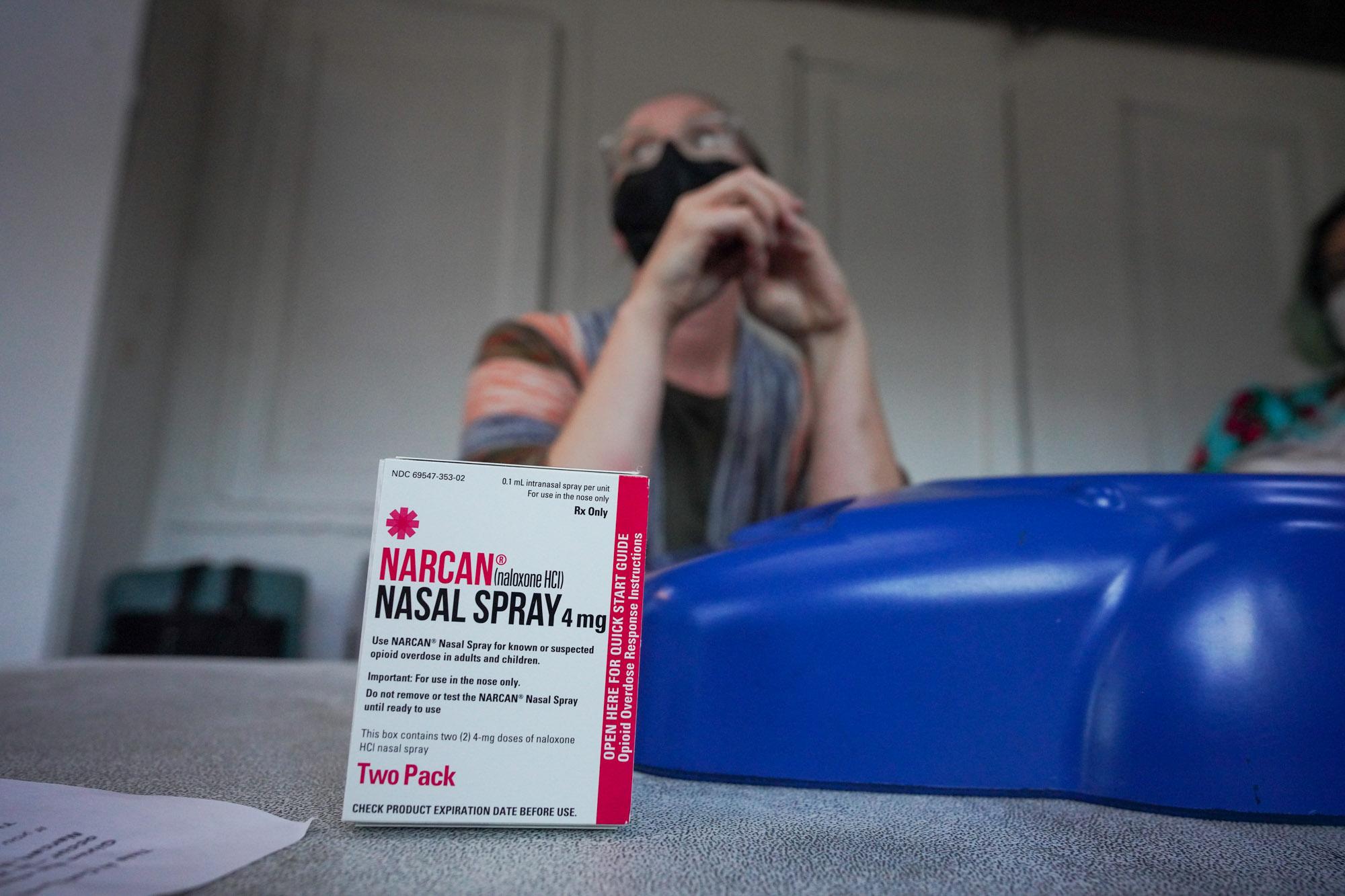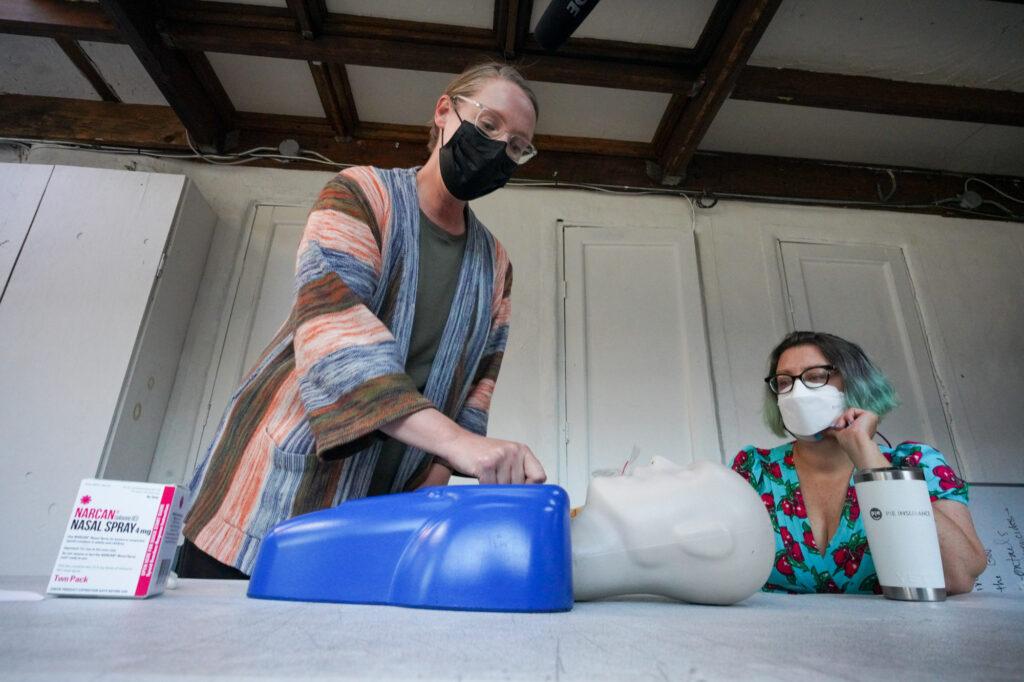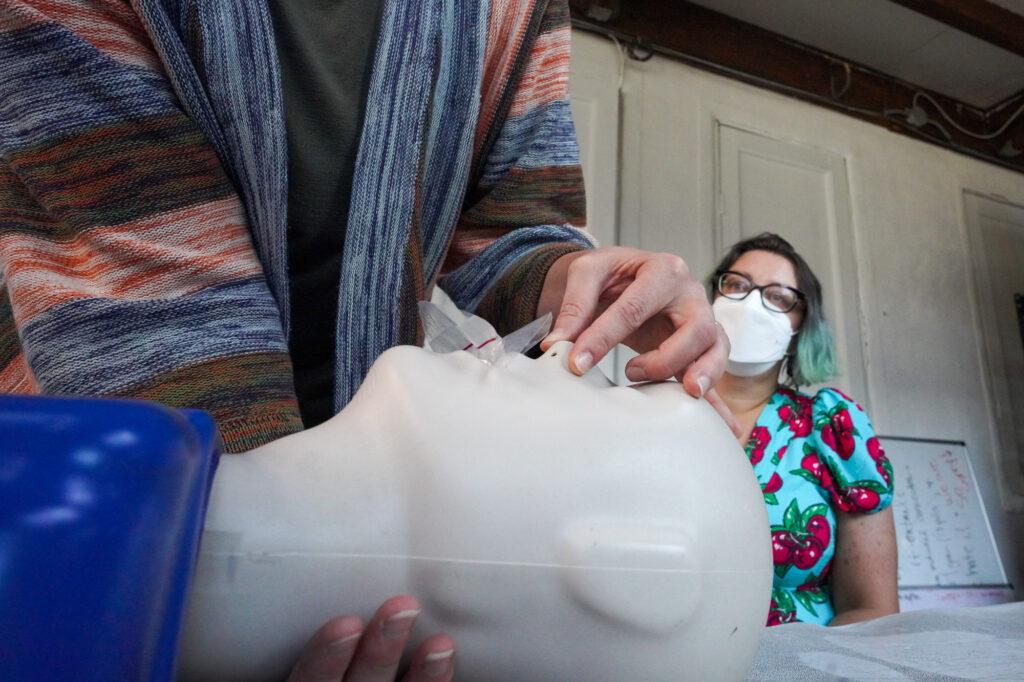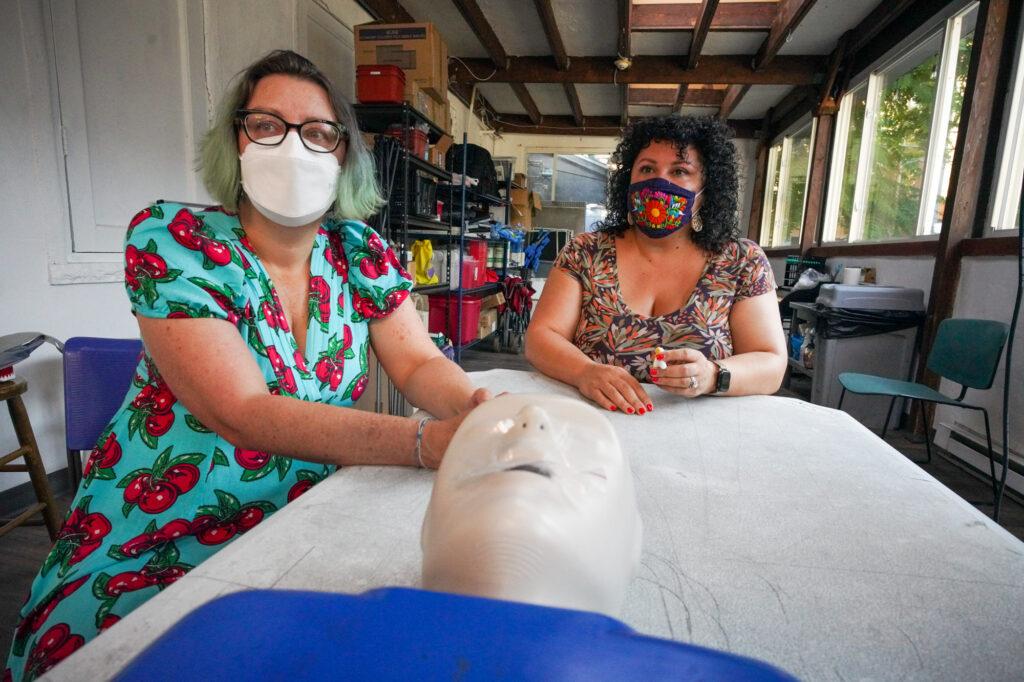
Every five hours, there is a fatal drug overdose in Colorado. Many of those overdoses are due to an increase in fentanyl, a powerful synthetic opioid similar to morphine, but far more potent. The drug is increasingly found in other illicit drugs, such as cocaine, MDMA and even illegally produced marijuana. Users may not know that their drug has been spiked with fentanyl.
But, as total overdose deaths have increased in the state over the last couple of years, Naloxone has become readily available. Naloxone is often packaged as a nasal spray called Narcan, which blocks opioid receptors and effectively reverses overdoses. Narcan is available at many pharmacies across Colorado; Denver provides Narcan and fentanyl testing kits to residents of the city.
“If you walk on Earth or in Denver, we need you carrying it today,” said Lisa Raville, executive director of the Harm Reduction Action Center.
Raville recently trained Colorado residents Cherie Garcia-Kuper and Jolea Weatherspoon to administer Narcan. Colorado Matters senior host Ryan Warner and CPR News visual editor Hart Van Denburg tagged along to document the training. Indeed, Raville said, by reading this article or listening to the audio, you will also learn how to use Narcan in the case of an overdose.
Step 1: Determine if someone has overdosed

If you notice someone lying in an uncomfortable position or in an unusual place, tap their foot.
“If you tap their foot and they’re like ‘get out of here,’” Raville said. “Move on with your day.”
However, if the person is unresponsive, listen to their breathing, which may be infrequent or non-existent. Pay close attention to the person’s skin, which may be pale. The lips or fingertips may have a blue or gray tinge. “An opioid overdose is a lack of oxygen, and a slow or no heartbeat,” she said. So, if someone is experiencing an overdose, their breathing and skin will show signs.
Another technique to determine if someone has overdosed is the sternal rub. Make a fist and rub your knuckles along the breastbone. “Do it kind of hard,” she said. “It hurts, right? If somebody pops up, they’re not overdosing.”
If you are still unsure, there is no harm in proceeding. “What’s nice about Narcan is that if there’s no opioids in their system, it won’t do anything to them,” she said. “You cannot mess this up.”
Step 2: Start rescue breathing and spray the Narcan

If you have determined that the person is overdosing, the next step is to have a bystander call 911. Then begin performing rescue breaths, but do not give chest compressions. “Go underneath their neck, close their nose and do two big breaths [into their mouth] right off the top,” she said. After those two breaths, spray Narcan into one nostril.
Start with one spray, then move on to more breaths. “Now, we’re going to rescue-breathe once every seven seconds for three minutes,” she said. You can have someone keep track of time with a cellphone. “You’ve got to give it time to work,” she added.
“If they’re not awake after three minutes, and the paramedics haven’t arrived, you’re going to use the other dose.” It does not matter which nostril you choose.
Step 3: Take care of yourself

“It can be really scary to recognize and respond” to an overdose, Raville said. If possible, she suggested checking on the person after EMTs have taken them away. Raville was a rescue breather for somebody experiencing an overdose fairly recently. “I closed my eyes for a week and saw his face,” she added. “People definitely need to take care of themselves.”
Several walls at the Harm Reduction Act Center are covered with framed photographs of Coloradans who have lost their lives to overdoses. “People don't have to die of an opioid overdose. It is preventable with access to Naloxone or Narcan," she said. "Once they're on the wall, it's over.”
Frequently Asked Questions
Where can I get Narcan?
More than 470 pharmacies across Colorado carry the spray and you don’t need a prescription, Raville said. She also suggested checking with local health departments.
The Denver Department of Public Health and Environment offers Narcan for free to Denver residents. “DDPHE has seen a huge increase in demand for free Narcan this year. So far, we’ve received over 5,000 requests for overdose prevention supplies,” said spokesperson Emily Williams. “After the [fentanyl] tragedy in Commerce City in February, demand for our kits exploded. It took us some time to get caught up, but now orders are shipping within one to two weeks of being received.”
How much does it cost?
Costs vary from pharmacy to pharmacy, Raville said, but the price is around $125 for two bottles that each contain two doses. “Medicaid does cover it, and most major insurance companies cover it with a co-pay,” she continued.
As for any possible stigma from health insurers: “We’ve been able to normalize it now that anybody in the United States should be carrying it,” she said.
Am I responsible if the person dies?
No. Colorado has eliminated all civil and criminal liability. Someone acting in good faith “is immune from criminal prosecution and not liable for any civil damages. While laws vary to some degree from state to state, “anybody in the United States can carry Naloxone,” Raville said.
Could the person who overdosed wake up and pose a threat?
Most often, people wake up confused. “We haven’t had anybody come up combative” in the last 25 overdoses the Harm Reduction Action Center has responded to, Raville said. She said the nasal spray is “kinder and gentler” than the stronger doses of Naloxone that paramedics administer.
Am I saving someone who risks overdosing again?
Maybe. But, “dead drug users do not have the opportunity for life,” Raville said. “And if it was your kid, you would want us fighting.” Trainees Cherie Garcia-Cooper and Jolea Weatherspoon immediately agreed: “I would rather resuscitate somebody for them to go out and use again than watch them die,” Weatherspoon added.
Can I leave Narcan in a car?
No. It’s best to keep Narcan between 59 and 77 degrees Fahrenheit. “Keep it on you, maybe in a purse or a bag,” Raville said. However, if you do happen to leave Narcan in your car for a couple of days, that is OK. “It won't do too much to it,” she added.









